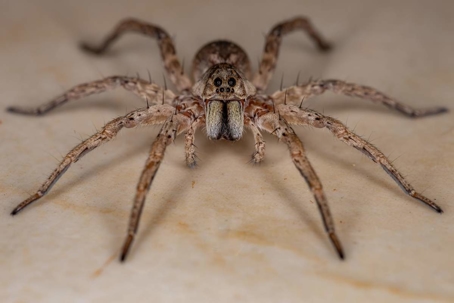What Can Wolf Spiders Eat?
Wolf spiders are opportunistic and highly adaptable predators that consume a wide variety of prey, primarily consisting of small invertebrates. Their diet reflects their role as ground-dwelling hunters that rely on stealth, speed, and excellent vision rather than webs to catch their food. Here's an overview of what wolf spiders can eat:
Insects (Primary Food Source)
Wolf spiders mainly feed on insects, and their diet includes:
They often stalk or ambush these insects at night, using their acute eyesight and fast reflexes to strike swiftly.
Other Arachnids
Wolf spiders will also prey on smaller or weaker spiders and other arachnids, including:
Smaller or juvenile wolf spiders
Harvestmen (daddy longlegs)
Mites (larger varieties)
Cannibalism is not uncommon, especially when food is scarce or during mating encounters gone wrong.
Learn more: Do Wolf Spiders Eat Brown Recluse Spiders?
Soft-Bodied Invertebrates
They are known to consume various soft-bodied invertebrates that are easy to overpower, such as:
Worms (e.g., earthworms, which they may attack if found on the surface)
Larvae and pupae of various insects
Centipedes and millipedes (particularly juveniles or smaller species)
Occasionally, Very Small Vertebrates
In rare cases—usually involving larger species of wolf spiders—there are documented instances of them preying on:
Tiny lizards
Small frogs
Baby snakes These events are unusual and typically occur when the prey is weak, immobile, or newly hatched, and the spider is large enough to subdue it.
Scavenging Behavior
Although wolf spiders are primarily hunters, they have been observed scavenging on dead or dying insects. They may take advantage of immobilized or injured prey, especially if hunting conditions are poor.
Cannibalism
When food is limited or during mating, cannibalism among wolf spiders—particularly females consuming males—is not only possible but relatively common. Females sometimes consume mates post-copulation or even before mating begins if they feel threatened or hungry.
What Do Wolf Spiders Eat?
Wolf spiders prefer live, mobile prey that they can actively hunt and subdue using their speed, agility, and keen eyesight. Unlike web-building spiders that passively wait for food, wolf spiders are aggressive ground hunters, meaning their prey preferences are driven by movement, accessibility, and nutritional value. Here is what wolf spiders prefer to eat:
Small to Medium-Sized Insects (High Preference)
These make up the bulk of a wolf spider’s diet and are preferred because they’re abundant, easy to capture, and offer high protein content.
Crickets – Highly attractive due to their size, movement, and nutritional value.
Flies – Especially if grounded or slow-moving.
Ants – Frequently targeted, especially solitary workers.
Beetles (soft-bodied species) – Preferred over hard-shelled beetles, though wolf spiders can subdue smaller ones.
Grasshoppers and locust nymphs – Actively hunted if size is manageable.
Caterpillars – Soft-bodied and slow-moving, making them ideal prey.
Other Spiders (Moderate Preference)
Cannibalism and inter-spider predation are common, especially among juveniles or when food is scarce.
Juvenile or smaller spiders – Easily overwhelmed.
Web-building spiders – Often ambushed in or near their webs.
This includes occasional intraspecies predation, where wolf spiders will eat smaller members of their own species.
Soft-Bodied Invertebrates (Situational Preference)
When abundant or during specific conditions (wet environments, nighttime surface activity), wolf spiders will target:
Larvae and maggots – A protein-rich and immobile source.
Worms (earthworms) – Eaten when they surface after rain or irrigation.
Small centipedes and millipedes – Chosen carefully due to potential chemical defenses.
Scavenged Insects (Low Preference)
Wolf spiders prefer live prey, but may opportunistically feed on recently deceased insects if:
Food is scarce
The prey is still soft and fresh
Movement mimics live behavior (e.g., twitching)
Very Small Vertebrates (Rare Preference)
Large wolf spider species (e.g., Hogna spp.) have occasionally been documented preying on:
Tiny frogs or toads
Newborn or small lizards
Small hatchling snakes
These are rare occurrences, generally opportunistic, and not part of their routine diet.

